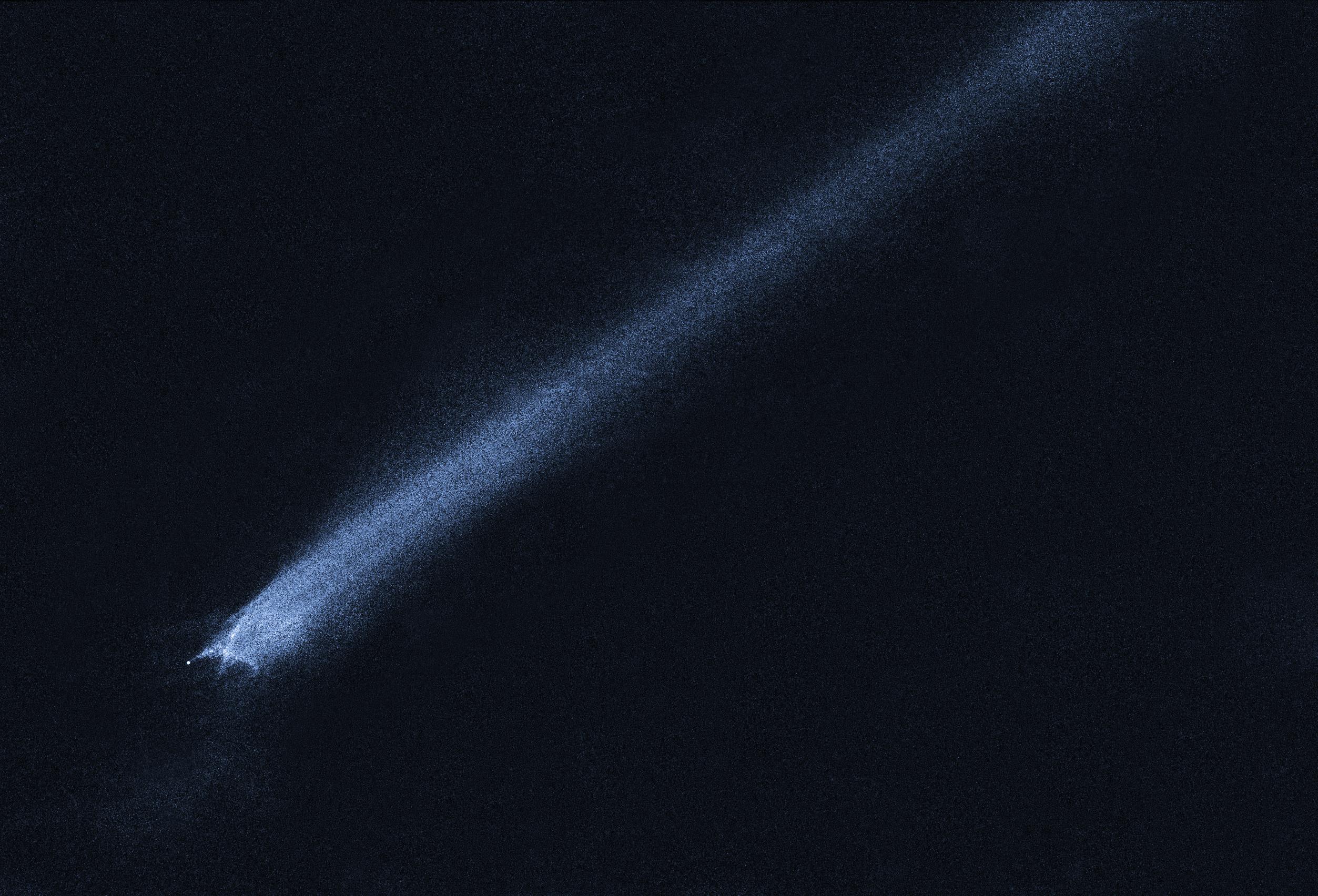
Asteroid P/2010 A2
Asteroid P/2010 A2 puzzled astronomers in 2010 with its comet-like tail. The object appeared so unusual in ground-based telescope images that discretionary time on the Hubble Space Telescope was used to take a close-up look. This picture, captured on January 29, 2010, shows a bizarre X pattern of filamentary structures near the point-like nucleus of the object and trailing streamers of dust. The complex structure suggests that the object was the product of a head-on collision between two asteroids traveling five times faster than a rifle bullet (5 kilometers per second). Astronomers have long thought that the asteroid belt is being ground down through collisions, but such a smashup has never before been seen. The filaments are made of dust and gravel, presumably recently thrown out of the 460-foot-diameter nucleus. Some of the filaments are swept back by radiation pressure from sunlight to create straight dust streaks. Embedded in the filaments are co-moving blobs of dust that likely originate from tiny, unseen parent bodies. An impact origin would also be consistent with the absence of gas in spectra recorded using ground-based telescopes. At the time of the Hubble observations, the object was approximately 180 million miles (300 million km) from the Sun and 90 million miles (140 million km) from Earth. For more information, visit: hubblesite.org/news_release/news/2010-07
